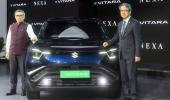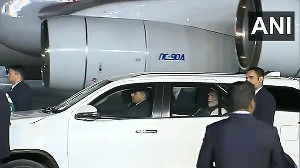'The testing and certification have been completed, and implementation could occur within a year, depending on the number of vehicles.'

The central government is planning to install higher capacity chargers of 360 kilowatt (kW) along highways, expressways and on bus stops to bring down the charging time to just 15 minutes for heavy-duty electric vehicles and compatible premium cars like Jaguar and Mercedes.
“What we are aiming for is a shorter charging time, around 15 minutes, because we cannot expect people to wait at charging stations. If they have to wait, who will buy electric vehicles (EVs)? A 15-minute charging time is acceptable. The two main reasons for increasing charger capacity are to shorten charging duration and to enable longer distances covered per charge,” a government official said.
For context, a typical 60 kW DC charger takes about an hour to fully charge an EV.
“The government aims to install at least 100,000 charging stations or DC (direct current) chargers by 2030. Initially, the estimate was set at 400,000. Currently, chargers of 60 kW are being installed in urban areas, while 240 kW chargers are being set up along expressways and highways, following a ratio of 70:30. Once all necessary approval comes, the remaining stations will be covered by 360 kW chargers,” the official added.
As of March 31, the country has 37,752 chargers across 29,277 stations.
According to the latest guidelines from the ministry of power, minimum charger capacities are 12 kW for electric two wheelers (e2w) and electric three wheelers (e3w), 60 kW for electric four wheelers (e4w), and 240 kW for electric-buses and electric-trucks.
The new 360 kW capacity chargers will specifically be used for heavy-duty electric vehicles and commercial electric vehicles, such as electric trucks (e-trucks) and electric buses (e-buses).
They are planned to be installed at bus depots operated by state transport undertakings (STUs), as well as along highways and expressways.
Under the PM Electric Drive Revolution in Innovative Vehicle Enhancement (PM E-Drive) scheme, the government aims to establish a comprehensive network of public charging stations with varying charger capacities based on the type of vehicle.
The targets include 48,400 charging stations for two and three-wheelers, 22,100 for four-wheelers (e4w), and 1,800 for buses and trucks, with a total investment of ₹2,000 crore.

Charging times can vary depending on the battery capacity of the vehicle and the charger's power delivery rate.
For example, charging from 0 per cent to 80 pre cent with a 60 kW charger typically takes between 30 to 45 minutes.
The premium electric vehicles available in India are compatible with higher capacity chargers. But, economical models take longer to charge.
“Hence, 360 kW chargers will be allocated for e-trucks and e-buses and installed at STUs, highways, and expressways. Individuals and businesses with premium EVs like Jaguar, Mercedes, or BYD can also utilise these chargers,” the official explained.
Queries sent to secretaries and spokespeople from the heavy industries and power ministries remained unanswered at press time.
"The testing and certification have been completed, and implementation could occur within a year, depending on the number of vehicles.
"Currently, there are not even 1 per cent of heavy-duty vehicles (HDVs) in operation, with only around 3,000-4,000 e-buses deployed by STUs. This may eventually be incorporated into the PM E-Drive scheme,” the official confirmed.
The government is set to support 14,028 e-buses under the PM E-Drive scheme, and with an investment of ₹ 1.75 trillion, it plans to roll out 100,000 e-buses by 2030 under the Bharat Urban Megabus mission. The number of e-trucks under the PM E-Drive scheme has yet to be announced.
To achieve 30 per cent electric vehicle penetration by 2030, enhancing e-mobility infrastructure is essential.
A collaborative effort from public and private stakeholders, along with strategic policies and sustainable technology, is vital, according to Somesh Kumar, Partner and Leader of Power & Utilities at EY India.
Indian consumers seek convenience, reliability, and value, and improved EV specifications are crucial for widespread adoption.
"Increasing battery capacity can extend driving ranges, easing potential buyers' concerns. Additionally, boosting charger capacity for faster charging can reduce wait times, especially for commercial operators.
"This would also enhance the utilisation of public charging stations, making infrastructure investments more attractive for private operators. These developments could help create a more resilient charging ecosystem," Kumar said.
Feature Presentation: Rajesh Alva/Rediff











